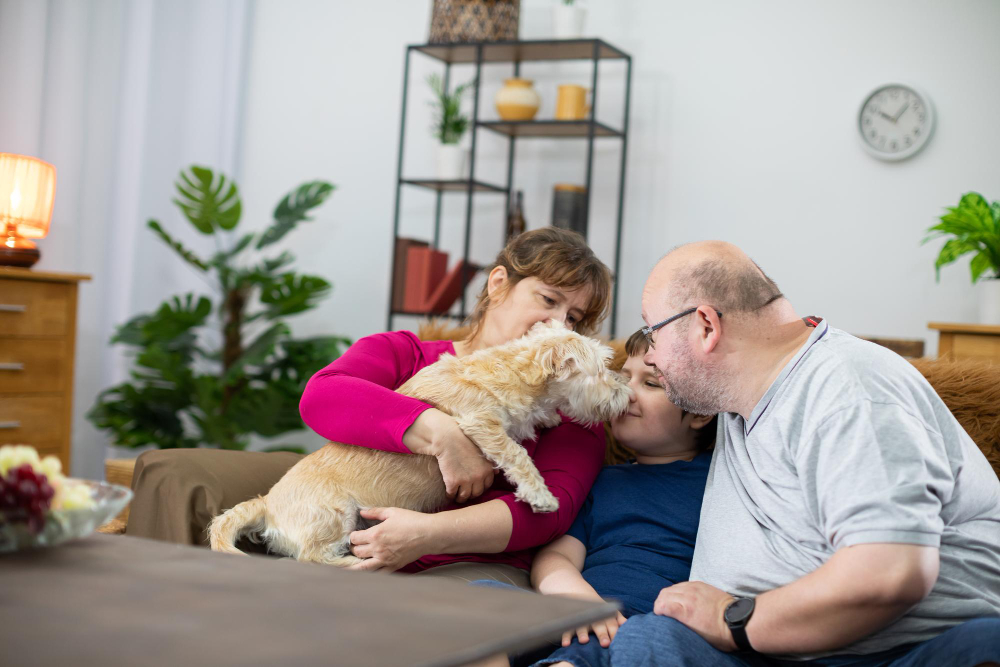Preparing for In-Home Pet Euthanasia

Preparing for In-Home Pet Euthanasia

Making the decision to say goodbye to a beloved pet is one of the most difficult experiences a pet owner will face. Opting for in-home euthanasia allows your pet to spend their final moments in a familiar, comfortable, and peaceful environment. This compassionate choice minimizes stress for both your pet and your family.
Preparing your home and family for this process can help ensure the experience is as gentle and loving as possible. This guide will walk you through the practical and emotional steps to take when preparing for in-home euthanasia, helping you create a serene space to honor your companion's life.
Why Choose In-Home Euthanasia?
Choosing to say goodbye at home offers several profound benefits. Your pet remains in a space where they feel safe and secure, surrounded by familiar sights, sounds, and smells. This can significantly reduce the anxiety and fear that often accompany a visit to a veterinary clinic.
For family members, being at home allows for a more private and personal grieving process. You can create a peaceful atmosphere, take the time you need to say your farewells, and support one another without the clinical feel of a vet's office. This setting allows the focus to remain entirely on celebrating the love and bond you shared with your pet.
How to Prepare Your Home
Creating a calm and comfortable environment is a key part of the in-home euthanasia process. Here are some steps to prepare your space.
Choose a Comfortable Location
Select a spot in your home where your pet feels most relaxed. This could be their favorite bed, a cozy spot on the couch, or a sunny patch by the window. If your pet loves the outdoors, a quiet area in your backyard or on the porch can also be a wonderful option, weather permitting. Make sure the location is easily accessible for the veterinarian.
Gather Comfort Items
Surround your pet with their favorite things. This might include:
- Their softest blanket or bed
- A favorite toy
- A piece of your clothing that smells like you
These items provide a sense of security and comfort for your pet in their final moments. It's also a good idea to have some of their favorite treats on hand. The veterinarian will often encourage giving treats during the initial sedation phase.
Create a Peaceful Atmosphere
Set a tranquil mood to help keep everyone calm. You can do this by:
- Playing soft music: Gentle, calming music or nature sounds can help create a serene environment.
- Dimming the lights: Soft, low lighting is less jarring than bright, overhead lights. Consider using lamps or natural light from a window.
- Minimizing distractions: Turn off the television, silence your phones, and try to limit any loud noises or interruptions.
Prepare for the Veterinarian's Arrival
Ensure there is a clear path to the location you've chosen for the procedure. The veterinarian will need a small space to set up their supplies. It's also helpful to have good lighting available in case they need it, such as a nearby lamp they can turn on. Having towels or a waterproof pad on hand is also a practical step, as your pet may lose control of their bladder or bowels as their muscles relax.
How to Prepare Your Family
Preparing emotionally for your pet's passing is just as important as preparing your physical space. This is a time for compassion, both for your pet and for each other.
Talk with Your Children
If you have children, it's important to talk to them about what is going to happen in an age-appropriate way. Use clear and honest language. Avoid using euphemisms like "putting to sleep," which can be confusing and frightening for young children. Explain that the pet is very sick or old and that the veterinarian will help them pass away peacefully and without pain. Let them decide if they want to be present for the procedure. There is no right or wrong choice, and it's important to respect their decision.
Decide Who Will Be Present
Discuss with your family who wishes to be present during the euthanasia. Some people may want to be there for the entire process, while others may prefer to say their goodbyes beforehand. It's a deeply personal decision, and every family member should be allowed to do what feels right for them. It is also important to consider how other pets in the household will be involved. Allowing them to see their companion after they have passed can help them understand what has happened and prevent them from searching for their friend.
Allow Yourself to Grieve
Grief is a natural and necessary response to loss. Acknowledge that it's okay to be sad, to cry, and to feel a wide range of emotions. Give yourself and your family members permission to grieve in your own ways. Some people find comfort in sharing stories and memories of their pet, while others may need quiet time to process their feelings. Support each other with patience and understanding.
Plan for Aftercare
Thinking about aftercare options beforehand can relieve you of having to make difficult decisions in the moment. The veterinarian will discuss these with you, but it's helpful to have an idea of what you'd prefer. Common options include:
- Cremation: You can choose a private cremation, where your pet's ashes are returned to you, or a communal cremation.
- Burial: If you have the space and local regulations permit, you may choose to bury your pet at home.
Your veterinarian can help you make arrangements with a reputable pet aftercare service.
What to Expect During the Appointment
Understanding the process can help ease some of the anxiety you may be feeling. While each veterinarian's approach may vary slightly, the process generally involves two steps:
- Sedation: The veterinarian will first administer a sedative, usually with a small injection under the skin. This medication will help your pet fall into a deep, peaceful sleep over the course of 5-15 minutes. They will be fully relaxed and unaware of any pain or stress. This is a good time to comfort them, give them treats, and say your final goodbyes.
- Final Injection: Once your pet is completely sedated and unconscious, the veterinarian will administer the final euthanasia solution. This medication works quickly and painlessly to stop the heart. The veterinarian will then listen to your pet's heart to confirm they have passed away.
The entire process is quiet and gentle. The veterinarian will give you as much time as you need to grieve before they assist with the aftercare arrangements you've chosen.
Honoring Your Pet's Memory
Saying goodbye is incredibly hard, but the love you shared with your pet will last a lifetime. Preparing for an in-home euthanasia ensures their final moments are filled with peace, comfort, and love.
If you are considering in-home euthanasia in Jupiter, FL, and have more questions, please reach out to our compassionate team. Rover Veterinary Care is here to support you and your family through this difficult time.
